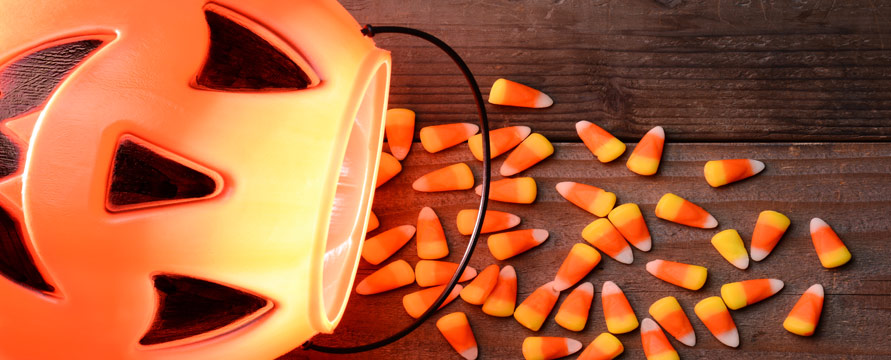
First, let’s get to the sugar-beating tips. Because we all know that in pretty much everyone’s houses the Halloween candy will soon be in abundance.
- Moderation! Only let kids have a few pieces of candy
- Rinse with water after eating sugar
- Chew sugar-free gum
- Floss well to get any candy “left behind”
- Brush, but NOT immediately after eating candy (certain foods—like those with sugar—weaken tooth enamel after eating so it’s best to wait at least a half hour)
And now for a brief (but exciting!) history lesson.
Ahhh, Halloween. A glorious day where kids of all ages dress up to go door to door soliciting candy from their neighbors. Great times for everyone involved, really. But just how exactly did this tradition begin??
Well, as near as historians can tell, trick or treating evolved from the Celtic end of the year (November 1) Samuin tradition. During this shift from one year to the next, Celts believed the worlds of the living and dead overlapped and spirits could roam the earth (spooky!). So young men would dress up as evil spirits in hopes they would fool the “real” evil spirits and not be threatened by them.
Then, as the Catholic Church rose to power, they attempted to steer people away from Samuin by instead celebrating “All Souls’ Day.” During this day, instead of attempting to repel evil spirits, children and peasants would dress up and go door to door offering prayers and songs for the dead in exchange for food. This practice was known as “souling.”
Eventually, instead of dying out, this practice simply became more secular, first in Europe and then coming to the Americas in the early 1900s where children used it to receive candy on All Hallows’ Eve (the night before All Souls’ Day). However, the first actual use of the term “trick or treat” is traced back to a Canadian newspaper article from 1927 to describe how children went about getting candy as they traipsed around their neighborhoods. Then its use in a Walt Disney cartoon in the 1950s cemented its iconic status.
And now you’ll be prepared if your kids ever ask you why they trick or treat. You’re welcome!

